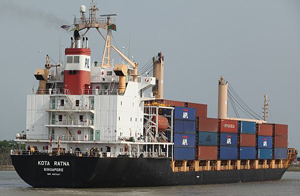On May 16, the European Court of Justice (ECJ), Europe’s top court, issued a long-awaited opinion on whether the European Union (EU) must share approval of trade agreements with its member states. In a 28-page opinion, the ECJ concluded that the EU has the
Last week, the New York State Assembly stripped a Buy American requirement from the state’s proposed budget for fiscal year 2016-17. The provision would have required use of U.S.-produced iron, steel and manufactured goods in public infrastructure projects
Last week, the European Union released a 17-page report on the 12th round of negotiations of the Transatlantic Trade and Investment Partnership (TTIP), in which it reviewed the status of the various elements of the negotiations. The EU also reiterated that
A Djaghe white paper on the TTIP Procurement Negotiations provides an in-depth examination of the government procurement issues in the negotiations of the Transatlantic Trade and Partnership (TTIP), based on a compilation of relevant posts from
Over the past several months, posts (listed below) have noted the publication of a number of papers as part of the “TTIP in the Balance” project, jointly organized by the Centre for European Policy Studies (CEPS) and the Center for Transatlantic Relations
Digital issues in the negotiations of the Transatlantic Trade and Investment Partnership (TTIP) is the subject of a newly published paper: “Telecommunications and Internet Services: the digital side of the TTIP”. In the paper, Andrea Renda and
The House of Representatives’ expansion of set-asides for U.S. small businesses could raise objections from trading partners. Tucked into the National Defense Authorization Act (NDAA) for FY 2016, as passed by the U.S. House of Representatives in mid-May,
A TTIP commitment to curb future Buy American requirements would set a new standard for procurement agreements. As noted in a recent post, the Transatlantic Trade and Investment Partnership (TTIP) will need to raise the bar on procurement commitments in
In the TTIP negotiations, the U.S. and EU should consider exchanging comprehensive coverage of procurement of their central government entities. The negotiations of the Transatlantic Trade and Investment Partnership (TTIP) provide an opportunity for the

Summary
The Trans-Pacific Partnership (TPP) is akin to other free trade agreements (FTAs) that the United States (US) has negotiated over the past two decades that are aimed at opening markets and providing new opportunities for USÂ goods, services, and firms.
The TPP is the first FTA to be negotiated by the Obama Administration.
Update on TPP and New FTA Negotiations Initiated by the Obama Administration The countries engaged in the negotiations of TPP have expanded to a group of 12 with the addition of Japan. They now represent nearly 40 percent of global GDP and a third of global trade.  While the parties made substantial progress on the negotiations in 2013, they were unable to complete them as hoped. No date has been set for finalizing the agreement. The Obama Administration has initiated negotiations of a second comprehensive FTA  -- the Transatlantic Trade and Investment Partnership (TTIP) with the European Union (EU). A successful negotiation of the TTIP with the EU and its 28 member states would more than double the number of countries subject to FTAs with the U.S. Currently, the U.S. has 14 FTAs that cover 20 countries (Australia, Bahrain, Canada, Chile, Colombia, Costa Rica, the Dominican Republic, El Salvador, Guatemala, Honduras, Israel, Jordan, Mexico, Morocco, Nicaragua, Republic of Korea, Oman, Panama, Peru and Singapore). Read More This posting by Jean Heilman Grier was first published in Asia Pathways, a blog of the Asia Development Bank Institute, on May 31, 2013.Summary The Trans-Pacific Partnership (TPP) is akin to other free trade agreements (FTAs) that the United States (US) has negotiated over the past two decades that are aimed at opening markets and providing new opportunities for US goods, services, and